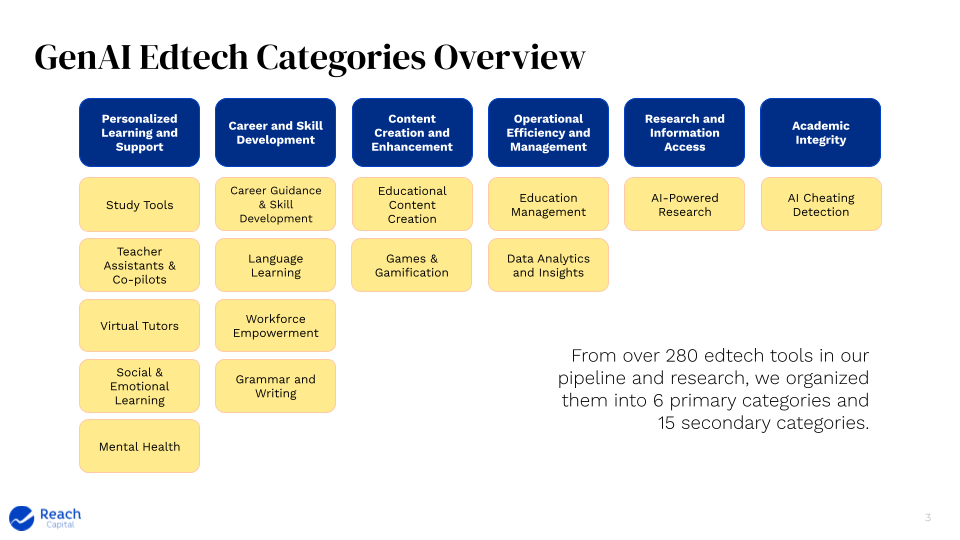Pipeline Perspectives: Trends From 280+ Generative AI Edtech Tools

AI are the two most popular letters of the alphabet these days, and no wonder: Hardly a day passes without some major advancements in the core foundational models, or the launch of new, powerful applications built on them.
So far this year, our pipeline and research have identified over 280 education tools that incorporate generative AI as a core engine of their product — and that’s likely just scratching the surface. Every week we see more from our AI + Learning Catalyst, our pipeline for pre-seed stage AI edtech tools. (If you are building AI for education and the workforce, reach out!)
Fueling this deluge is the fact that generative AI itself has democratized software development, enabling many more people to be builders. Knowing a little coding and prompting can now go a long way toward creating something useful. More simply put: if it can be described, it can probably be built. In our pipeline, we’ve seen seasoned engineers, developers and product designers alongside college students and classroom teachers building educational software.
To get a better lay of this landscape, we bucketed these tools across six primary categories and 15 secondary categories. Note: this organization is more a starting, illustrative effort to show the expanse of tools we’ve seen. The reality is that Generative AI is forcing us to continually rethink and redraw traditional boundaries of the education landscape.

Some categories have attracted outsized attention and efforts. AI-powered study and tutoring tools that offer not just answers but personalized explanations remain at the top of the chart. Workflow tools that save time — particularly teacher assistants and “copilots” that help create lesson plans, assignments and assessments — have also proliferated. Some are designed by former educators, informed by their own experiences and pain points.

Other categories hold immense potential for impact but have seen fewer tools (at least for now). Take research, for example. Many world-changing innovations began as research, and countless products and technologies (including AI itself) continue to benefit from the latest research. Yet such knowledge is often gated behind paywalls or otherwise largely inaccessible. We’ve been encouraged by the emergence of tools like Elicit that can surface, summarize and disseminate the most relevant information, and in doing so accelerate the process of applying research to practice and products.
Do the popularity of categories correlate to their level of investment? So far, there is a loose correlation. Career and skill development tools have raised larger sums of money, which is consistent with macrotrends in funding for workforce and corporate learning markets.

In the deck below, we dive deeper into each of the categories, looking at common applications and differentiating factors, along with a map of new entrants, funded startups and incumbent companies in each space.








